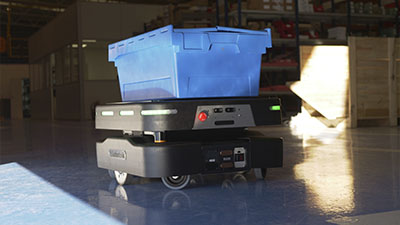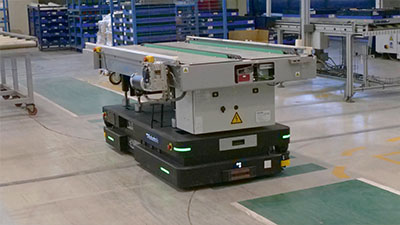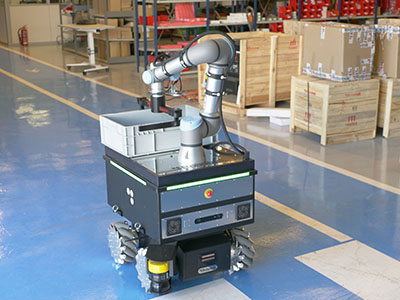Today’s consumer demands ever faster production and delivery times. This means that manufacturers must necessarily speed up their production and logistics processes to remain competitive.
Mobile robotic solutions are already established in transport and logistics with more than 49,500 units (+45%) sold in 2021, according to World Robotics 2022. In addition, it shows a record high of robots installed in factories worldwide, reaching a 31% year-on-year growth rate.
Find out in this article about the different types of warehouse robots, the advantages of a mobile robot in a factory or what aspects to take into account.
Are you considering automating some tasks in your workplace? You have heard about automation by robotics but have doubts about it? Do you already have good experience with a warehouse robot and are you considering expanding your AMR fleet? This reading clarifies many of the most frequently asked questions, but if you still have doubts, our team is ready for any specifics.
TYPES OF ROBOTS FOR A WAREHOUSE
Static, guided, mobile… Automation and robotics in warehouses differ depending on the specific manufacturing needs. In some cases, bulky, static robots are needed to perform tasks automatically and always in the same place.
In other cases, a mobile robot that performs tasks in different locations within the same warehouse is more useful. It is also common to combine static and mobile robotics for workplaces where different tasks are performed at the same time.
These are the 3 main types of warehouse robots:
- Automated Guided Vehicles (AGVs). These are the ones that require the installation of guides, magnets or some kind of markers to move in a predictable way. AGVs are usually in demand for tasks that require little complexity.
- Autonomous Mobile Robots (AMR). They move autonomously and in an unlimited space by means of sensor elements. They are able to avoid obstacles and re-route if necessary.
- Mobile Manipulators. These are autonomous mobile robots, AMR, which integrate a robotic arm into the platform. So they have the capacity to perform the same tasks as a robotic arm, but in different locations.
WHAT IS A WAREHOUSE ROBOT?
They are robots developed with the necessary software and hardware to automate tasks within a warehouse, support the human team, replace them in cases of repetitive or dangerous tasks, and ultimately, streamline and improve all manufacturing processes.
The vast majority of Robotnik products are robots capable of working in warehouses and factories as they have different sizes, load capacities and technical specifications. Here you can see the warehouse robots and here the mobile warehouse manipulators.
3 TIPS FOR AUTOMATE YOUR WAREHOUSE ON AN INTELLIGENT WAY
- Consider multi-purpose robots. One of the main trends in warehouse robotics is to acquire a robot capable of performing multiple tasks, i.e. a multi-purpose robot.
- Mobile Manipulation. Robotnik has recently experienced an increase in demand for mobile manipulators in warehouses. One of the most automated tasks in this environment is the transport of goods, but what if you have the option of a single robot to perform both transport and pick and place? Mobile handling is a clear trend for 2022 that will continue to consolidate.
- Let yourself be advised by experts. It is usual for an end user to be clear about what the improvement he wants or his goal, but he doesn’t necessarily know what specific robotic solution he needs to achieve that goal. In this sense, Robotnik has 20 years of experience in service robotics.




